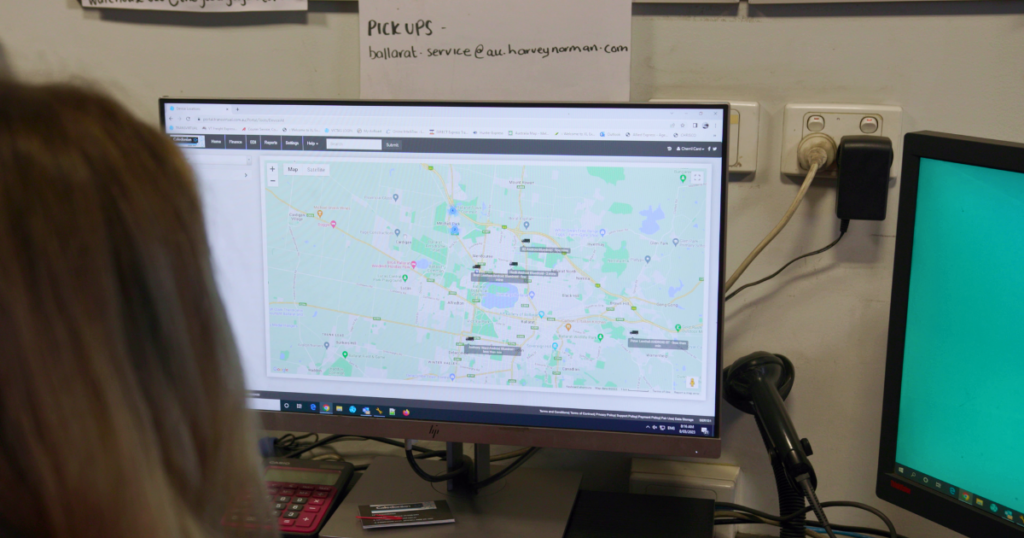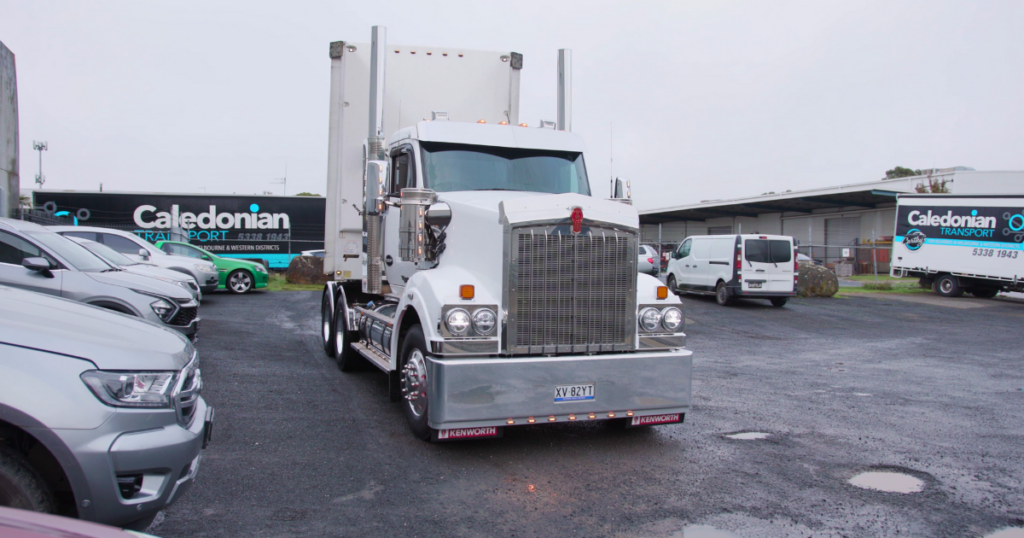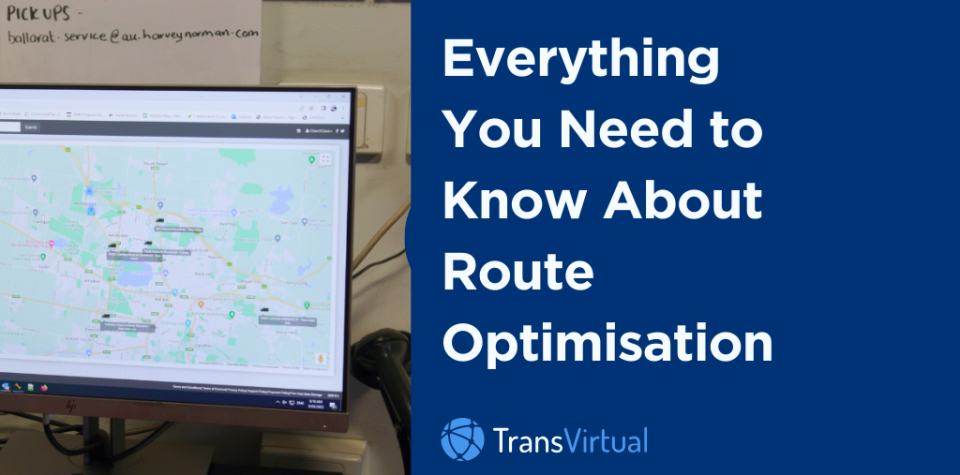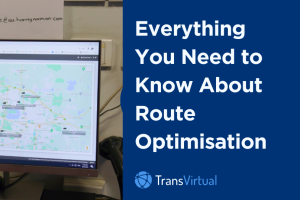Table of Contents
For delivery businesses, efficiency is king.
If you can get the goods into consumer’s hands faster and more reliably than your competitors, you’ll win repeat business. It’s pretty simple isn’t it? If only it was easy, too. Manual route planning can be time-consuming, costly and not to mention riddled with errors. Instances you should avoid when you’re trying to optimise last mile delivery.
So what is route optimisation software and how can it help you? Lets find out in this guide.
What is route optimisation software?
Route optimisation, as the name implies, is the process of determining the most cost-effective and efficient route.
When planning routes, you take into account the following factors:
- Distance: Perhaps the most basic factor is distance travelled. This involves finding the most optimized routes (aka the total distance covered by a vehicle or group of vehicles between different stops or points along the route).
- Driver’s workflow: This considers the sequence of tasks a driver follows on an average work day, including route planning, loading and unloading cargo, and admin duties.
- Freight and vehicle: Route optimization considers vehicle and freight characteristics, including limitations and special requirements.
- Pickup and delivery time windows: This represents the time frame designated for dropping off or collecting a shipment at a specific location.
- Traffic congestion: Route optimization software considers real-time traffic to ensure that you avoid congested routes and choose alternative roads to save time and fuel.
Speaking of routing software, these specialized platforms are the best way businesses can plan individual and multi stop delivery routes. As we’ve established, manual route planning is outdated and is no longer a viable method in finding the most efficient routes.
Plus, you might always go for a speedy route without realizing there could be traffic jams or sudden customer requests popping up.
Route Optimization Software: FAQS

How Does Route optimization Software (or Route Planning Software) Work?
Route optimisation software (or delivery route planning software) uses state-of-the-art technology to gather information about your fleet and run it through either a powerful server-side engine, or one based in the cloud.
If it’s a server-based software (rather than cloud-based), the server must be programmed to run route optimization algorithms and calculations needed to generate the most efficient route.
A side note: cloud-based software tends to be easier, cheaper and faster to update making it more flexible to your business needs as you grow and change in the future.
So, how does it work?
First, you scan your deliveries into the app. To create a complete journey for your driver’s work day, the software will analyse:
Highly-detailed mapping data (from platforms such as Google maps and other route optimization algorithms or the like)
- Time windows
- Road conditions
- Real-time traffic data
Turn by turn directions to ensure that your delivery driver avoids unnecessary detours or delays
These platforms can also plan for multiple routes. Multi stop route planning takes into account factors such as order of stops, vehicle capacity, and cost optimization.
A route optimization app can also generate historical data, allowing you to optimize routes based on past performance and trends. This feature is essential for a delivery business that wants to improve their route planning strategies over time.
Where can you get route optimization software?
If you have the skills and expertise, you can build a platform from scratch. Of course, not everyone has the time or means.
There are also free route planner apps such as Google Maps, but these lack the customisation features a dedicated route planning software offers. The next reasonable option is to sign up for a premium software or service.
Why use route optimisation platforms and not just general navigation software to find efficient routes?
You’re a delivery business, you know that the fastest route might not be the one with the least distance. You might need to divert delivery drivers to other jobs so they don’t cross busy roads during peak hour traffic, or avoid bridges that can’t carry their weight.
So, it goes without saying that you’ll need more than a free route planner app to do the job.
Route optimisation software gets your drivers from point A to B, but then to C, D and beyond in the most efficient (and profitable) way possible.
For one, you get advanced delivery features in a secure app, including route optimization algorithms that consider multiple variables like vehicle size, weight restrictions, delivery time windows, and traffic patterns. It also includes dynamic route planning, so you can adjust and find the most optimal route in real-time.
Finally, premium systems also offer better integration with other business platforms, allowing seamless data exchange and workflow automation.
Why might route optimisation software be useful in a business?
It’s clear by now that the route planning process (or delivery operations in general!) is a complex task.
It might sound as simple as providing driving directions to your delivery drivers. But optimizing routes require understanding changing traffic and road conditions, your customers, and of course, your fleet.
A route planning app gives you back what can be hours of planning, by automating the process as soon as you allocate loads to your drivers for the day. It also shaves time off every trip. Those labour costs could be adding up without you knowing it!
It also works in real time if there are any sudden changes that are out of your control. The software will let you optimise while your drivers are on the go.
Of course, the key to this is to have multi stop route planner built into your software.
Summarizing the Benefits of Route Optimization Software

It hardly needs to be said now, but lets briefly summarize the benefits of route optimization software.
At its core, an effective route planner can help you achieve:
- Cost savings: By avoiding traffic jams or longer routes, you get to minimise distance travelled and fuel costs.
- Efficiency: With a delivery route planner, you simply enter your stops and let the platform do its thing, allowing you to optimise routes quickly and efficiently.
- Save time and resources: It goes without saying that you reduce overall travel time with a route optimizer. What’s more, some apps let you generate proof of delivery, protecting you and your customers. This eventually leads to greater customer satisfaction and repeat business.
- Dynamic adaptability: Plans can change anytime in a day. A reputable route planning tool allows you to edit routes in response to unexpected factors such as road closures, traffic conditions, and customer requests.
- Compliance and safety: Aside from letting you plan routes, these apps help ensure compliance with regulation by allowing you to monitor driving hour limits, weight restrictions, and other transport regulations.
- Data insights: As we called out earlier, route planning apps offer valuable data and analytics on delivery performance, route efficiency, and more. You can also built-in GPS tracking, allowing you to monitor your fleet in real-time.
- Reduced environmental impact: It’s always a good idea to do your part in reducing carbons emissions and environmental impact. This not only promotes sustainability, but also boosts your company’s stand on saving good old mother nature.
In summary, a route planning solution offer tangible benefits for businesses, they streamline operations, cut costs, boost customer satisfaction, and improves your bottom line.
Over to you…
Has this helped you understand route optimisation better?
We hope so, because at TransVirtual, we share your focus on delivering a better service to your customers and making your runs faster and more efficient. Route optimisation should be on everybody’s radar. If you know someone in the industry who could benefit, please share this guide.
If you’d like to learn more about how TransVirtual can help optimise delivery routes in your business, get in touch today for a chat or you can book a free demo.



